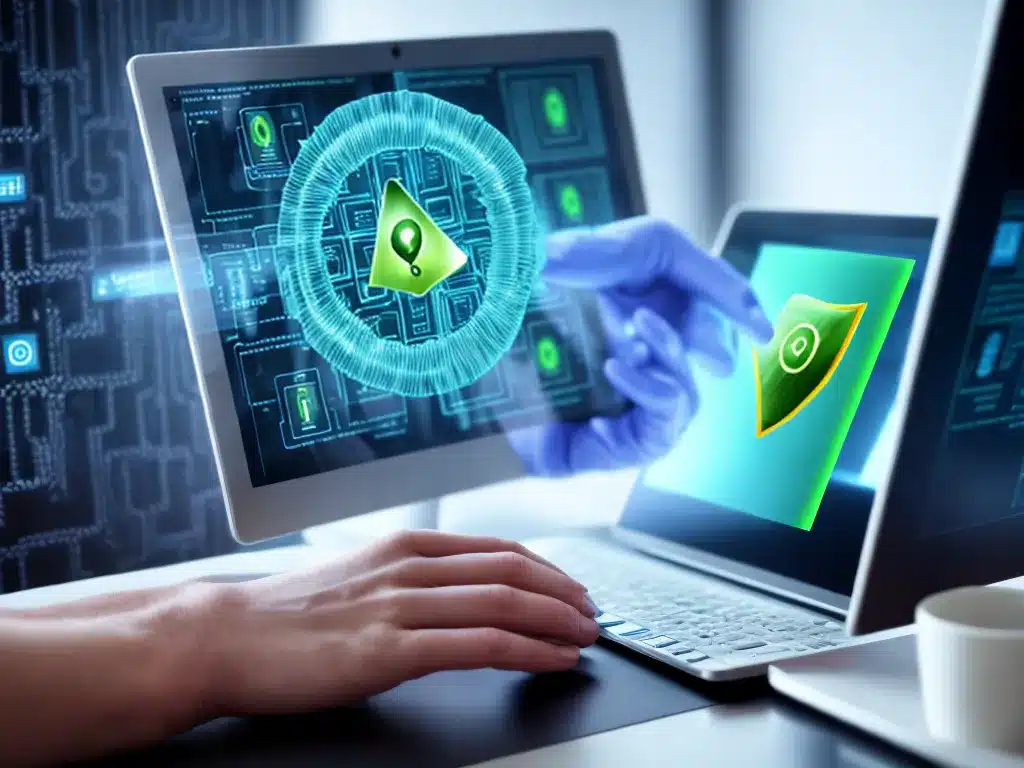
Viruses and malware can cause a lot of headaches for computer users. These malicious programs can slow down your device, corrupt your files, and even steal your personal information. Thankfully, there are steps you can take to detect and remove viruses and malware from your computer. Here is an in-depth guide on how to get rid of these digital pests.
Detecting Viruses and Malware
The first step is identifying if your computer has been infected in the first place. Here are some telltale signs that your device may have viruses or malware:
-
Slow performance: If your computer is taking forever to load programs or web pages, it could mean there is malware running in the background. Viruses hog your device’s memory and processor power.
-
Frequent crashes or freezes: Malicious software can make your computer unstable. Sudden crashes, freezes, or error messages could indicate an infection.
-
Pop-up ads: Lots of pop-up ads, even on trusted sites, are a sign of adware. This malware bombard you with advertisements.
-
Unusual activity: Strange activity like your mouse moving on its own or programs opening randomly could point to viruses.
-
Spike in activity: Check your Activity Monitor on Mac or Task Manager in Windows. If there are unfamiliar processes using up resources, it may be malware.
If you notice any of these behaviors, it’s time to scan your computer for viruses and malware.
Scanning for Malware
To locate infections on your computer, you need to run antivirus software. Here are some top antivirus programs to consider:
-
Malwarebytes – This program is designed specifically for malware detection and removal. It offers a free scanner.
-
Bitdefender – Bitdefender consistently earns top ratings for its antivirus software. It has robust malware protection.
-
Kaspersky – Kaspersky Lab makes some of the best antivirus solutions. Its scans identify all types of viruses and malware.
-
Windows Defender – Microsoft’s built-in antivirus software for Windows is a viable free option.
Make sure to update your antivirus software before running a scan. The latest virus definitions will help it find new threats. Then run a full system scan which will search every file and folder on your computer for malware.
This process can take a while depending on your hardware. Be patient and avoid using other programs during the scan.
Removing Viruses and Malware
If your antivirus software finds infections, it should prompt you to remove the threats. Simply click the option to clean or quarantine the malware. If it fails to fully eliminate them, try these steps:
1. Boot into Safe Mode
Restart your computer and press F8 before Windows loads to access the Safe Mode options. Boot into Safe Mode with Networking. This prevents malware from loading at startup.
2. Run an Anti-Malware Scan
Download and install Malwarebytes Anti-Malware. Update it so it has the latest definitions. Then run a full scan in Safe Mode to find infections.
3. Delete Malware Files
Malwarebytes should display all the infected files it located. Select them all and click “Remove Selected”. This will delete the malicious files.
4. Reset Browser Settings
Malware often modifies browser settings. Use the reset option in Chrome, Firefox, etc to restore original settings.
Running antivirus scans in Safe Mode along with specialized anti-malware tools will help you remove even stubborn infections. Make sure to update your antivirus software regularly to prevent new malware attacks. Practicing safe browsing habits is also key to avoiding viruses.
Preventing Future Infections
Cleaning an infection is only half the battle. You also need to prevent future malware attacks. Here are some tips:
-
Install antivirus software – Protect all your devices with a reputable antivirus program. Do regular scans to catch malware early.
-
Update software – Always apply the latest security patches to your operating system, browser, apps, etc. Out-of-date software is vulnerable.
-
Avoid suspicious links/attachments – Don’t download random files or click sketchy links in emails, messages, etc.
-
Use strong passwords – Password protect your devices and accounts with long, complex passwords that are hard to crack.
-
Watch what you download – Only download software from trusted sources like app stores. Pirated software can contain malware.
-
Use caution with external devices – Don’t connect flash drives or hard drives from untrusted sources to your computer.
-
Make backups – Regularly back up your data in case you need to wipe your system clean after an infection.
Staying vigilant is key to keeping your devices free of viruses and malware. Running occasional scans and following safe computing practices will help protect you. Be proactive and you can avoid costly infections.












